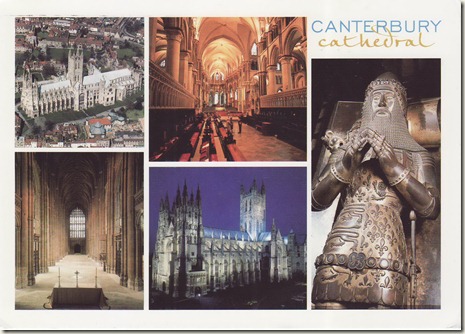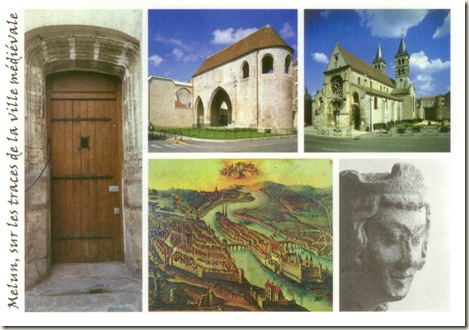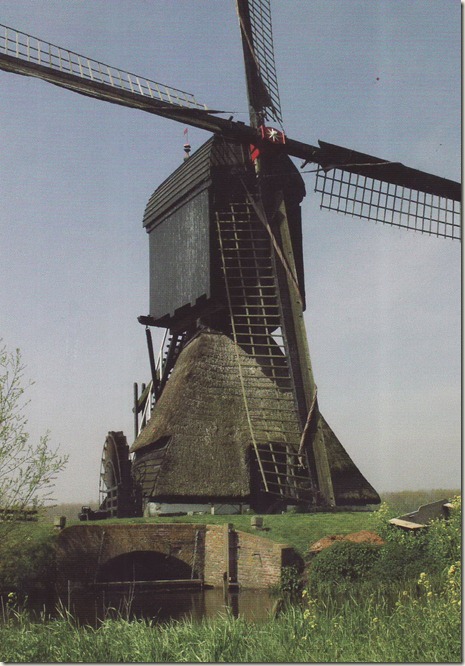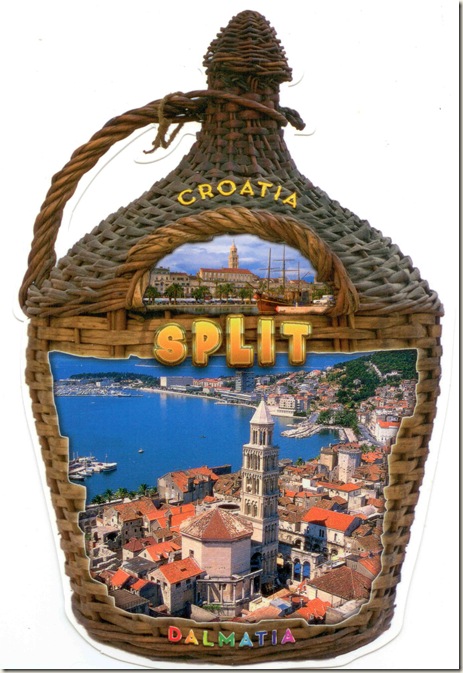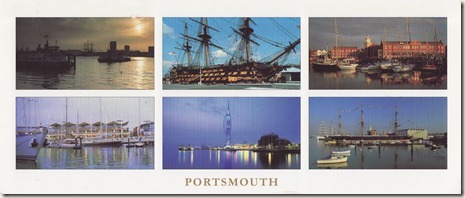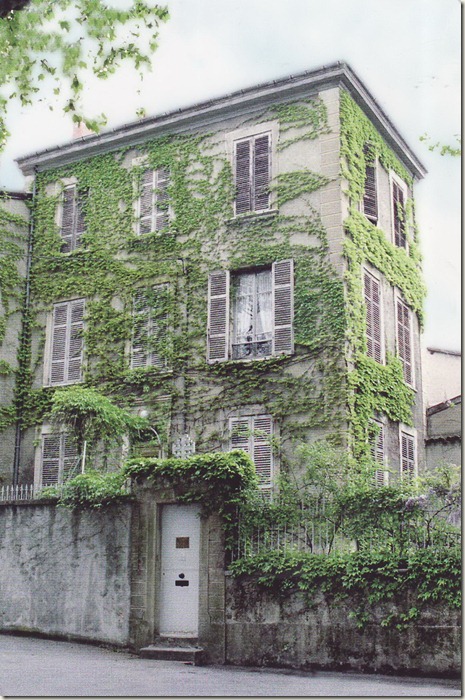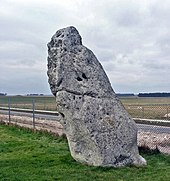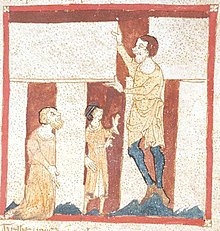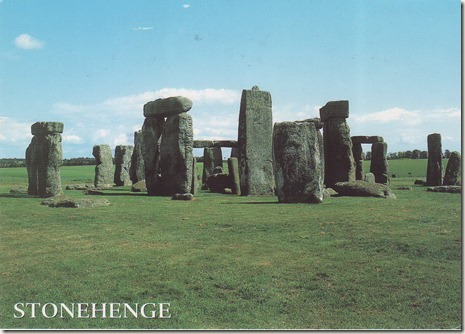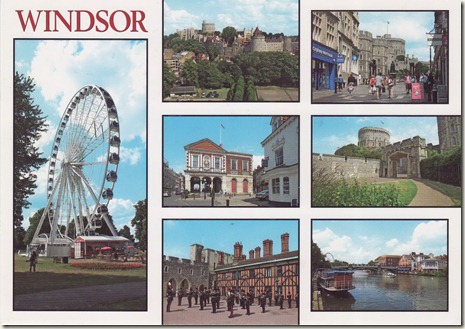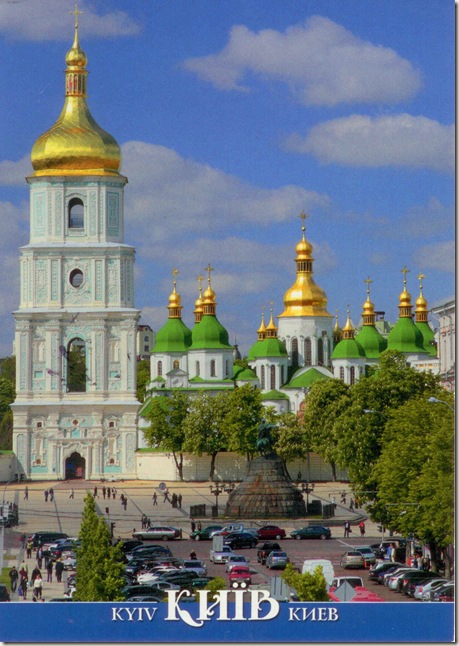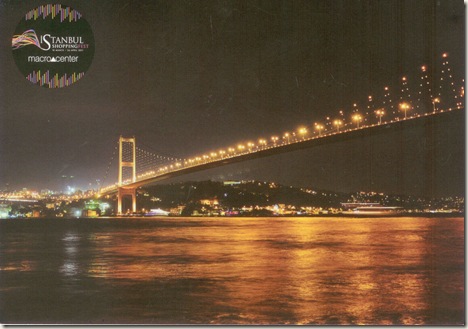Canterbury Cathedral in Canterbury, Kent, is one of the oldest and most famous Christian structures in England and forms part of a World Heritage Site.
It is the cathedral of the Archbishop of Canterbury, leader of the Church of England and symbolic leader of the worldwide Anglican Communion. Its formal title is the Cathedral and Metropolitical Church of Christ at Canterbury.
History
Foundation by Augustine
The cathedral's first archbishop was Augustine of Canterbury, previously abbot of St. Andrew's Benedictine Abbey in Rome. He was sent by Pope Gregory the Great in 597 as a missionary to the Anglo-Saxons. Augustine founded the cathedral in 602 and dedicated it to St. Saviour. Archaeological investigations under the nave floor in 1993 revealed the foundations of the original Saxon cathedral, which had been built across a former Roman road.
Augustine also founded the Abbey of St. Peter and Paul outside the city walls. This was later rededicated to St. Augustine himself and was for many centuries the burial place of the successive archbishops. The abbey is part of the World Heritage Site of Canterbury, along with the ancient Church of St. Martin.
Later Saxon and Viking periods
A second building, a baptistry or mausoleum, was built on exactly the same axis as the cathedral by Archbishop Cuthbert (740-758) and dedicated to St. John the Baptist.
Two centuries later, Oda (941-958) renewed the building, greatly lengthening the nave.
During the reforms of Archbishop St. Dunstan (c909-988), a Benedictine abbey named Christ Church Priory was added to the cathedral. But the formal establishment as a monastery seems to date to c.997 and the community only became fully monastic from Lanfranc's time onwards (with monastic constitutions addressed by him to prior Henry). St. Dunstan was buried on the south side of the High Altar.
The Saxon cathedral was badly damaged during Danish raids on Canterbury in 1011. The Archbishop, St. Alphege, was held hostage by the raiders and eventually martyred at Greenwich on April 19, 1012, the first of Canterbury's five martyred archbishops. Lyfing (1013–1020) and Aethelnoth (1020–1038) added a western apse as an oratory of St. Mary.
Priors of Christ Church Priory included John of Sittingbourne (elected 1222, previously a monk of the priory) and William Chillenden, (elected 1264, previously monk and treasurer of the priory). The monastery was granted the right to elect their own prior if the seat was vacant by the pope, and — from Gregory IX onwards — the right to a free election (though with the archbishop overseeing their choice). Monks of the priory have included Æthelric I, Æthelric II, Walter d'Eynsham, Reginald fitz Jocelin (admitted as a confrater shortly before his death), Nigel de Longchamps and Ernulf. The monks often put forward candidates for Archbishop of Canterbury, either from among their number or outside, since the archbishop was nominally their abbot, but this could lead to clashes with the king and/or pope should they put forward a different man — examples are the elections of Baldwin of Forde and Thomas Cobham.
Norman period
After the Norman Conquest in 1066, Lanfranc (1070–1077) became the first Norman archbishop. He thoroughly rebuilt the ruined Saxon cathedral in a Norman design based heavily on the Abbey of St. Etienne in Caen, of which he had previously been abbot. The new cathedral was dedicated in 1077.
Archbishop St. Anselm (1093–1109) greatly extended the quire to the east to give sufficient space for the monks of the greatly revived monastery. Beneath it he built the large and elaborately decorated crypt, which is the largest of its kind in England.
Though named for the 7th century founding archbishop, The Chair of St. Augustine may date from the Norman period. Its first recorded use is in 1205.
Martyrdom of Thomas Becket
A pivotal moment in the history of Canterbury Cathedral was the murder of Thomas Becket in the north-east transept on Tuesday 29 December 1170 by knights of King Henry II. The king had frequent conflicts with the strong-willed Becket and is said to have exclaimed in frustration, "Who will rid me of this turbulent priest?" The knights took it literally and murdered Becket in his own cathedral. Becket was the second of four Archbishops of Canterbury who were murdered (see also Alphege).
Following a disastrous fire of 1174 which destroyed the entire eastern end, William of Sens rebuilt the choir with an important early example of the Early English Gothic design, including high pointed arches, flying buttresses, and rib vaulting. Later, William the Englishman added the Trinity Chapel as a shrine for the relics of St. Thomas the Martyr. The Corona ('crown') Tower was built at the eastern end to contain the relic of the crown of St. Thomas's head which was struck off during his murder. Over time other significant burials took place in this area such as Edward Plantagenet (The 'Black Prince') and King Henry IV.
The income from pilgrims (some of whose journeys are famously described in Geoffrey Chaucer's "Canterbury Tales") who visited Becket's shrine, which was regarded as a place of healing, largely paid for the subsequent rebuilding of the Cathedral and its associated buildings. This revenue included the sale of pilgrim badges depicting Becket, his martyrdom, or his shrine.
12th century monastery
A curious bird's-eye view of Canterbury Cathedral and its annexed conventual buildings, taken about 1165, is preserved in the Great Psalter in the library of Trinity College, Cambridge. As elucidated by Professor Willis, it exhibits the plan of a great Benedictine monastery in the 12th century, and enables us to compare it with that of the 9th as seen at the abbey of Saint Gall. We see in both the same general principles of arrangement, which indeed belong to all Benedictine monasteries, enabling us to determine with precision the disposition of the various buildings, when little more than fragments of the walls exist. From some local reasons, however, the cloister and monastic buildings are placed on the north, instead, as is far more commonly the case, on the south of the church. There is also a separate chapter-house, which is wanting at St Gall.
The buildings at Canterbury, as at St Gall, form separate groups. The church forms the nucleus. In immediate contact with this, on the north side, lie the cloister and the group of buildings devoted to the monastic life. Outside of these, to the west and east, are the halls and chambers devoted to the exercise of hospitality, with which every monastery was provided, for the purpose of receiving as guests persons who visited it, whether clergy or laity, travellers, pilgrims or paupers.
To the north a large open court divides the monastic from the menial buildings, intentionally placed as remote as possible from the conventual buildings proper, the stables, granaries, barn, bakehouse, brewhouse, laundries, etc., inhabited by the lay servants of the establishment. At the greatest possible distance from the church, beyond the precinct of the convent, is the eleemosynary department. The almonry for the relief of the poor, with a great hall annexed, forms the paupers' hospitium.
The most important group of buildings is naturally that devoted to monastic life. This includes two Cloisters, the great cloister surrounded by the buildings essentially connected with the daily life of the monks,---the church to the south, the refectory or frater-house here as always on the side opposite to the church, and farthest removed from it, that no sound or smell of eating might penetrate its sacred precincts, to the east the dormitory, raised on a vaulted undercroft, and the chapter-house adjacent, and the lodgings of the cellarer to the west. To this officer was committed the provision of the monks' daily food, as well as that of the guests. He was, therefore, appropriately lodged in the immediate vicinity of the refectory and kitchen, and close to the guest-hall. A passage under the dormitory leads eastwards to the smaller or infirmary cloister, appropriated to the sick and infirm monks.
Eastward of this cloister extend the hall and chapel of the infirmary, resembling in form and arrangement the nave and chancel of an aisled church. Beneath the dormitory, looking out into the green court or herbarium, lies the "pisalis" or "calefactory," the common room of the monks. At its north-east corner access was given from the dormitory to the necessarium, a portentous edifice in the form of a Norman hall, 145 ft (44 m) long by 25 broad (44.2 m × 7.6 m), containing fifty-five seats. It was, in common with all such offices in ancient monasteries, constructed with the most careful regard to cleanliness and health, a stream of water running through it from end to end.
A second smaller dormitory runs from east to west for the accommodation of the conventual officers, who were bound to sleep in the dormitory. Close to the refectory, but outside the cloisters, are the domestic offices connected with it: to the north, the kitchen, 47 ft (14 m) square (200 m2), surmounted by a lofty pyramidal roof, and the kitchen court; to the west, the butteries, pantries, etc. The infirmary had a small kitchen of its own. Opposite the refectory door in the cloister are two lavatories, an invariable adjunct to a monastic dining-hall, at which the monks washed before and after taking food.
The buildings devoted to hospitality were divided into three groups. The prior's group "entered at the south-east angle of the green court, placed near the most sacred part of the cathedral, as befitting the distinguished ecclesiastics or nobility who were assigned to him." The cellarer's buildings were near the west end of the nave, in which ordinary visitors of the middle class were hospitably entertained. The inferior pilgrims and paupers were relegated to the north hall or almonry, just within the gate, as far as possible from the other two.
14th-16th centuries
The cathedral was seriously damaged by the severe earthquake of 1382, losing its bells and campanile. Prior Thomas Chillenden (1390–1410) rebuilt the nave in the Perpendicular style of English Gothic, but left the Norman and Early English east end in place.
Dissolution of the monasteries
The cathedral ceased to be an abbey during the Dissolution of the Monasteries when all religious houses were suppressed. Canterbury surrendered in March 1539, and reverted to its previous status of 'a college of secular canons'. The New Foundation came into being on 8 April 1541.
In 1688, the joiner Roger Davis, citizen of London, removed the 13th century misericords and replaced them with two rows of his own work on each side of the choir. Some of Davis's misericords have a distinctly medieval flavour and he may have copied some of the original designs. When Sir George Gilbert Scott performed his renovations in the 19th century, he ripped out the front row of Davis misericords, replacing them with his own designs, which themselves seem to contain many copies of the misericords at Gloucester Cathedral, Worcester Cathedral and New College, Oxford.
18th century to present
The original Norman northwest tower was demolished in the late 18th century due to structural concerns. It was replaced during the 1830s with a Perpendicular style twin of the southwest tower, currently known as the 'Arundel Tower'. This was the last major structural alteration to the cathedral to be made.
The Romanesque monastic dormitory ruins were replaced with a Neo-Gothic Library and Archives building in the 19th century. This building was later destroyed by a high-explosive bomb in the Second World War, which had been aimed at the cathedral itself but missed by yards, and was rebuilt in similar style several years later.
The cathedral is currently sponsoring a major fundraising drive to raise a minimum of £50 million to fund restoration. The cathedral is the Regimental Church of the Princess of Wales's Royal Regiment.
Canterbury Cathedral Appeal
In 2006, a new fundraising appeal to raise £50 million was launched to much media attention under the dramatic banner Save Canterbury Cathedral.
The Canterbury Cathedral Appeal was launched to protect and enhance Canterbury Cathedral's future as a religious, heritage and cultural centre. Every five years the cathedral carries out a major structural review. The last so-called Quinquennial made it very clear that a combination of centuries of weathering, pollution and constant use had taken its toll on the building and there were some serious problems at Canterbury Cathedral that needed urgent action.
Much of the cathedral's stonework is damaged and crumbling, the roofs are leaking and much of the stained glass is badly corroded. It is thought that if action is not taken now, the rate of decay and damage being inflicted on the building will increase dramatically with potentially disastrous results, including closure of large sections of the cathedral in order to guarantee the safety of the million plus worshippers, pilgrims and tourists who visit the cathedral every year.
The closure of parts of the cathedral would be seen as a significant loss of part of Britain's architectural heritage, and a huge limitation on the activities and services currently provided by the cathedral.
As well as restoring much of the historic beauty of the cathedral, the appeal aims to fund enhancements to visitor facilities and investment to build on the cathedral's significant musical tradition.
By November 2008, the current appeal had raised more than £9 million. Previous major appeals were run in the 1950s and 1970s.
In the summer of 2009, stones in the South West Transept were discovered to have cracked around several iron braces surrounding the Great South Window. The cracks are presumed to be the result of the metal expanding and contracting in hot and cold weather, and have severely compromised the structure of the window. The transept was immediately closed, in case the window were to collapse, while scaffolding was erected, and the area immediately in front of the inside of the window was closed off and covered, to maintain access via the south door beneath it. This area was given restoration priority immediately after the structural damage was discovered.
The Foundation
The Foundation is the authorised staffing establishment of the cathedral, few of whom are clergy. The head of the cathedral is the dean, currently the Very Reverend Robert Willis, who is assisted by a chapter of 24 canons, four of whom are residentiary, the others being honorary appointments of senior clergy in the diocese. There are also a number of lay canons who altogether form the greater chapter which has the legal responsibility both for the cathedral itself and also for the formal election of an archbishop when there is a vacancy-in-see. By English law and custom they may only elect the person who has been nominated by the monarch on the advice of the prime minister. The Foundation also includes the choristers, lay clerks, organists, King's Scholars, the Six Preachers and a range of other officers; some of these posts are moribund, such as that of the cathedral barber. The cathedral has a full-time work force of 300 making it one of the largest employers in the district and in addition also has approximately 800 volunteers.
Bells
The cathedral has a total of twenty one bells in the three towers:
The South West Tower (Oxford Tower) contains the cathedral’s main ring of bells, hung for change ringing in the English style. There are fourteen bells – a ring of twelve with two semi-tones, which allow for ringing on ten, eight or six bells while still remaining in tune. All of the bells were cast in 1981 by the Whitechapel Bell Foundry from seven bells of the old peal of twelve with new metal added, and re-hung in a new frame. The length (draught) of the ropes was increased by lowering the floor of the ringing chamber to the level of the south aisle vault at the same time. The heaviest bell of this ring weighs 34cwt (1.72 tonnes). The ringers practice on Thursday at 7.30pm.
The North West Tower (Arundel Tower) contains the cathedral’s clock chime. The five quarter chimes were taken from the old peal of twelve in the Oxford Tower (where the clock was originally), and hung from beams in the Arundel Tower. The chimes are stuck on the eighth Gregorian tone, which is also used at Merton College, Oxford. The hour is struck on Great Dunstan, the largest bell in Kent 63cwt (3.2 tonnes), which is also swung on Sunday mornings for Matins.
In 1316 Prior Henry of Eastry, probably the Cathedral’s greatest single benefactor, gave a large bell dedicated to St Thomas, which weighed 71½ cwt (3.63 tonnes). Later, in 1343, Prior Hathbrand gave bells dedicated to Jesus and St Dunstan. At this time the bells in campanile were rehung and their names recorded as “Jesus”, “Dunstan”, “Mary”, “Crundale”, “Elphy” (Alphege) and “Thomas”.
In the great earthquake of 1382 the campanile fell, destroying the first three named bells. Following its reconstruction, the other three bells were rehung, together with two others, of whose casting no record remains
The oldest bell in the cathedral is Bell Harry, which hangs in a cage atop the central tower to which the bell lends its name. This bell was cast in 1635, and is struck at 8am and 9pm every day to announce the opening and closing of the cathedral respectively, and also occasionally for services as a Sanctus bell.
